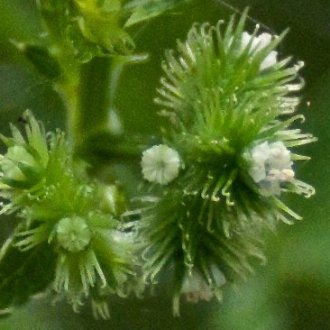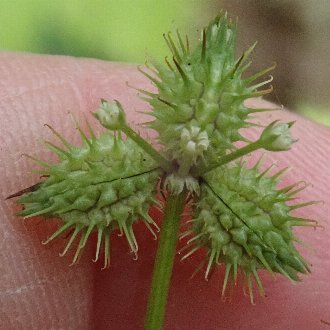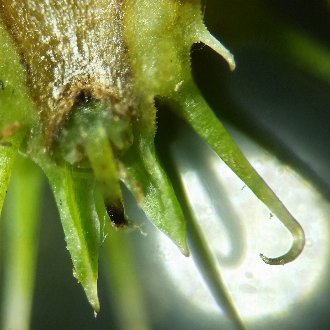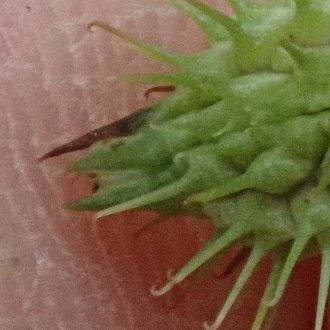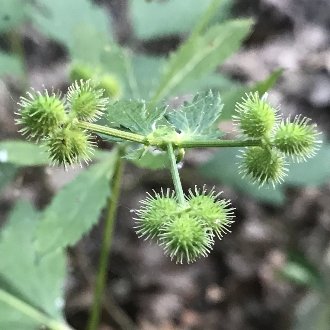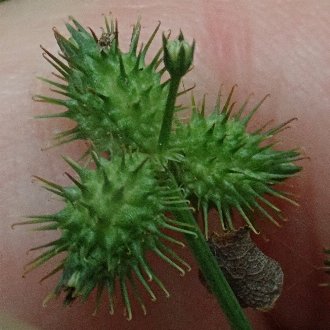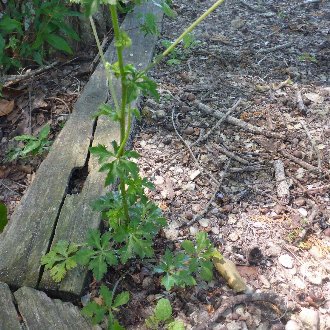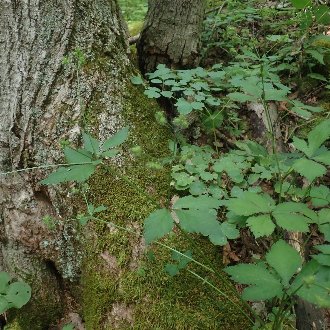Canadian Blacksnakeroot vs Largefruit Blacksnakeroot
Although all Sanicula pose an ID challenge, these two are particularly confusing as they have similar leaf shapes and inflorescences that look similar at a glance. They are easily distinguished by the pedicel length of staminate flowers, when present. The seeds are also relatively easy to distinguish. Plants may not be able to be identified by leaves alone, but habitat can offer a strong clue. Where their ranges overlap, S. canadensis is much more common and found in a wider range of habitats, including disturbed habitats, anthropogenic habitats, and forests in earlier successional stages, whereas S. trifoliatum is restricted to mature, undisturbed deciduous forests.
Canadian Blacksnakeroot (Sanicula canadensis) | Largefruit Blacksnakeroot (Sanicula trifoliata) |
A biennial of rich woodlands, native to eastern North America. | A biennial of rich, mature, deciduous forests, native to Eastern North America. |
Staminate flowers are on very short pedicels (<2mm) to the point where pedicels are often not even visible. Photo © Niki Robertson, CC BY 4.0. | Staminate flowers are on long pedicels (3-6mm) that are conspicuous. Photo © Lynn Harper, Public Domain. |
"Beak" at tip of fruit is noticeably shorter than the hooked bristles. Photo © Zihao Wang, CC BY 4.0. | "Beak" at tip of fruit is slightly longer than the hooked bristles. Photo © Lynn Harper, Public Domain. |
Fruits are smaller, and bristles are shorter relative to the size of the fruit. Photo © lanechaffin, Public Domain. | Fruits are larger, and bristles are longer relative to the size of the fruit. Photo © Lynn Harper, Public Domain. |
Found in a wider range of habitats, including more recently-disturbed forests and areas around human habitation. Photo © mfeaver, CC BY 4.0. | Restricted to mature forests that have not experienced disturbance recently. Photo © Lynn Harper, Public Domain. |
References & External Resources
These short lists show only links helpful for ID. For a complete list of references and resources also covering other aspects of ecology, visit the links section of the full article on each plant, which is the first entry here.



